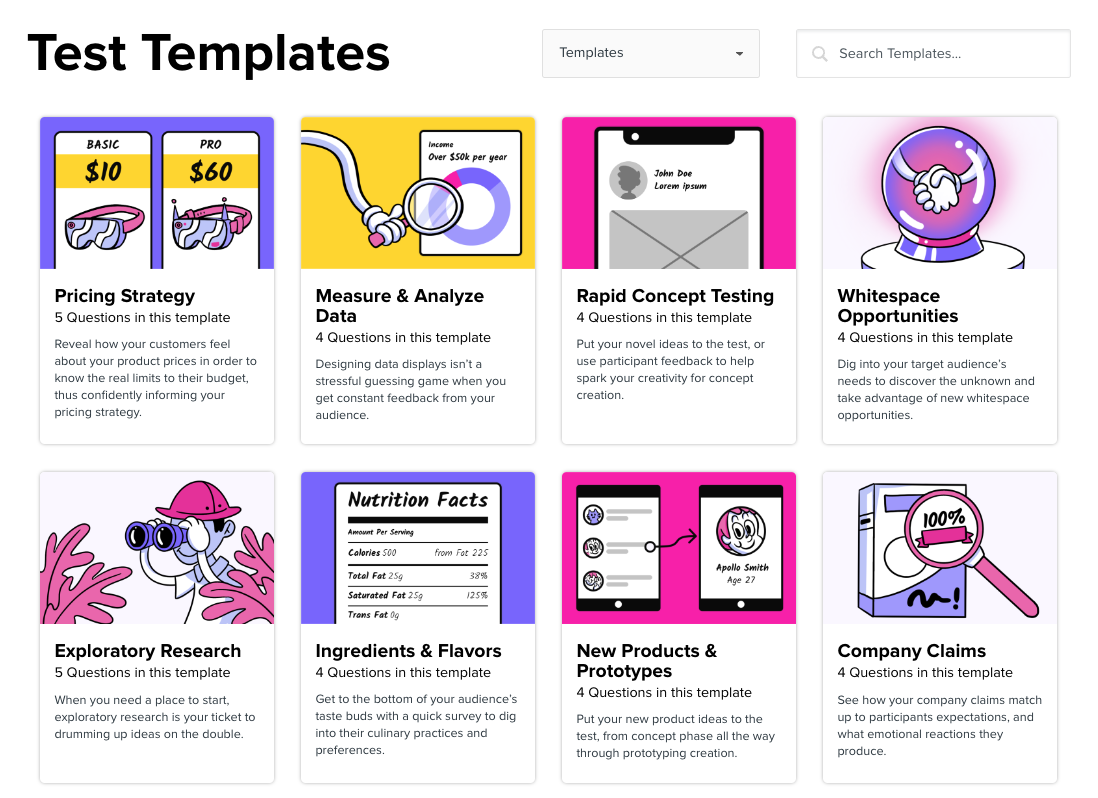Survey Creation 101: A Comprehensive Guide
Creating surveys is essential for anyone looking to gather feedback, conduct research, or collect data. Surveys offer a valuable way to gain insights and make informed decisions. This comprehensive guide to survey creation 101 will walk you through the entire survey creation process, from understanding the basics to analyzing the results. So let’s dive in and learn how to create effective surveys that deliver meaningful results!
Survey Creation 101
Understanding the Basics of Survey Creation
Before we jump into the nitty-gritty of survey design, let’s first explore why surveys are important and the different types you can utilize.
Surveys are essential for gathering valuable information directly from your target audience. They provide a platform for individuals to express their opinions, preferences, and suggestions. By understanding the needs and desires of your audience, you can optimize your products, services, or campaigns to better cater to them, ultimately boosting customer satisfaction and loyalty.
Now that we have established the importance of surveys, let’s delve into the different types you can employ depending on your goals.
Drive your marketing research forward with Helio
Get insights from your target audience in minutes
Different Types of Surveys
You can employ various types of surveys depending on your goals. Some common types include:
- Customer satisfaction surveys: These surveys help gauge customers’ satisfaction with your products or services. They provide insights into areas that need improvement and areas where you excel.
- Market research surveys: These surveys help you gather information about your target market, such as demographics, preferences, and buying habits. This data is crucial for making informed business decisions and developing effective marketing strategies.
- Employee engagement surveys: These surveys measure the level of engagement and satisfaction among your employees. They help identify areas where improvements can be made to enhance productivity and overall employee satisfaction.
- Event feedback surveys: These surveys allow you to gather feedback from attendees of an event. This feedback can help you understand what worked well and what can be improved for future events.
Each of these survey types serves a different purpose and requires unique approaches to design and implementation.
🚀 If you’re using Helio
Use our Test Templates to quickly launch surveys based on pre-set structures.

Helio provides over 50 Test Template structures, from Competitor Analysis to Name and Logo Testing.
Key Elements of a Good Survey
Now that we understand the significance of surveys and the types available, let’s explore the key elements that make a survey effective.
- Clear and concise questions: Ensure each question is easy to understand and doesn’t confuse the respondents. Avoid using jargon or technical terms that might alienate participants.
- Well-defined objectives: Clearly define your survey’s purpose and what is specific information you hope to obtain. This will guide the entire survey creation process and help you craft relevant questions.
- Balanced response options: Provide a diverse range of response options to capture the true sentiments of participants. Avoid leading or biased options that may influence their responses.
- Short and manageable length: Long surveys can be overwhelming and lead to reduced completion rates. Keep your survey concise and focused, allowing respondents to provide meaningful feedback without feeling fatigued.
By incorporating these key elements into your survey design, you can ensure that you gather accurate and actionable data from your target audience.
Subscribe to Closing the Gap
A newsletter to help makers and doers get closer to customers. Learn more.
We believe in protecting your data. Here’s our Privacy Policy.
Survey Creation 101: Steps to Designing Your Survey
Now that we have covered the basics of survey creation 101, let’s dive into the step-by-step process of designing an effective survey.
Defining Your Survey Goals
The first step in designing your survey is clearly defining your goals Ask yourself what information you seek and how it will benefit your research or decision-making process. Clear objectives will ensure that your survey is focused and provides actionable insights.
Choosing the Right Survey Type
After defining your goals, selecting the most appropriate survey type is important Consider the target audience, the data type you wish to collect, and the resources available for survey distribution. This will help you narrow your options and choose the most suitable survey approach.
Crafting Effective Questions
The heart of any survey lies in its questions. Crafting effective and unbiased questions is critical to obtaining accurate and valuable responses. Ensure that your questions are clear, concise, and directly aligned with your survey objectives. Consider using a mix of closed-ended and open-ended questions to capture both quantitative and qualitative data.
Deciding on the Survey Length
Survey length is crucial in maximizing response rates. While including every possible question is tempting, a shorter survey typically leads to higher completion rates. Prioritize your questions based on their relevance and importance and aim to keep the survey as concise as possible, while still capturing the necessary data. With Helio, you can poll the same audience over time, giving you faster insights and more time to craft better follow-up questions.
Survey Creation 101: Implementing Your Survey
Now that you have designed your survey, it’s time to implement it and gather responses.
Selecting Your Audience
Identifying the target audience for your survey is key to collecting accurate and relevant data. Determine who your survey is intended for and distribute it to individuals who fall within your defined target group.
🚀 If you’re using Helio
With nearly 1 million screened survey participants with 300 million attributes, you can target unthinkable combinations of target audiences. Select from over 1,000 ready-made audiences segmented by user behaviors, or request a custom audience.

Search through Helio’s ready-made audiences on the Audiences page of your account.
Choosing a Delivery Method
Deciding on the appropriate delivery method for your survey depends on several factors, including accessibility, ease of use, and respondent preferences. Common delivery methods include online surveys, phone interviews, face-to-face surveys, and paper-based questionnaires. Choose the method that best suits your audience and research goals.
Timing and Frequency of Surveys
Timing and frequency are essential considerations when implementing surveys. Determine the optimal time to distribute your survey to ensure high participation rates and accurate data. Additionally, consider the appropriate frequency of surveys to avoid survey fatigue and maintain respondent engagement. If you’re using a Helio audience for your survey, fulfilment usually takes minutes to complete.
Survey Creation 101: Analyzing Survey Results
Congratulations! You have successfully collected survey responses. Now it’s time to analyze the data and derive meaningful insights.
Interpreting the Data
Start by organizing and categorizing the survey responses. Look for patterns, trends, or recurring themes from the data. Use statistical analysis tools or software to generate quantitative insights to guide your decision-making process.
Identifying Trends and Patterns
By identifying trends and patterns within the survey data, you can better understand your target audience’s opinions, behaviors, and preferences. This information can help you make data-driven decisions, refine your strategies, and enhance your products or services.
Conclusion
Creating surveys is both an art and a science. With the right approach and careful consideration of each step, you can design surveys to yield valuable insights. So apply this comprehensive guide and collect the data you need to drive your success!
Survey Creation 101
FAQs
Surveys are essential for gathering valuable information directly from the target audience. They provide a platform for individuals to express their opinions, preferences, and suggestions. By understanding the needs and desires of your audience, you can optimize your products, services, or campaigns to better cater to them, ultimately boosting customer satisfaction and loyalty.
You can employ various types of surveys depending on your goals. Some common types include customer satisfaction surveys, market research surveys, employee engagement surveys, and event feedback surveys.
The key elements of a good survey include clear and concise questions, well-defined objectives, balanced response options, a short and manageable length, and appropriate survey type.
The steps to designing a survey include defining your survey goals, choosing the right survey type, crafting effective questions, deciding on the survey length, selecting your audience, choosing a delivery method, timing and frequency of surveys, and analyzing survey results.
Surveys are essential for gathering valuable information directly from the target audience. They provide a platform for individuals to express their opinions, preferences, and suggestions. By understanding the needs and desires of your audience, you can optimize your products, services, or campaigns to better cater to them, ultimately boosting customer satisfaction and loyalty.
You can employ various types of surveys depending on your goals. Some common types include customer satisfaction surveys, market research surveys, employee engagement surveys, and event feedback surveys.
The key elements of a good survey include clear and concise questions, well-defined objectives, balanced response options, a short and manageable length, and appropriate survey type.
The steps to designing a survey include defining your survey goals, choosing the right survey type, crafting effective questions, deciding on the survey length, selecting your audience, choosing a delivery method, timing and frequency of surveys, and analyzing survey results.












